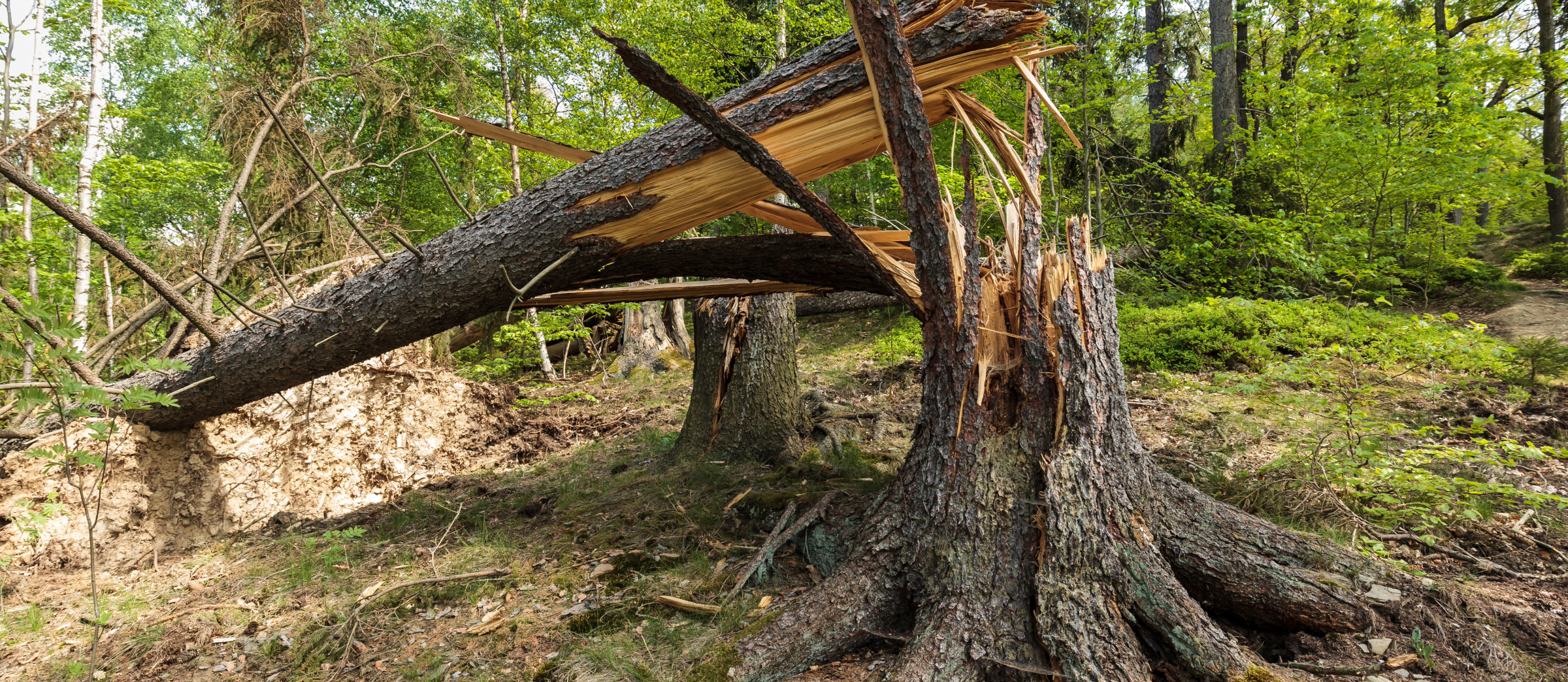Taxation of Timber Sales After a Casualty Event: A High-Level (Canopy) Discussion
Taxation of Timber Sales After a Casualty Event: A High-Level (Canopy) Discussion

Kentucky has faced several natural disasters already in 2025, and for many timberland owners, it is a question of where to start regarding salvaging and selling timber. Trying to understand the tax implications of timber damaged or lost due to storms can feel as overwhelming as the tangled mess left behind by a tornado. The good news is that there are resources available to help navigate this complex issue.
A great starting point is contacting your county extension agent, who can help identify relevant resources and provide guidance tailored to your situation. Additionally, the Kentucky Division of Forestry offers a list of Storm Damage Assistance resources that can be extremely helpful.
The most important thing is to realize that developing a strategic plan to fully understand all the potential options, for your given situation, will take time. It is also advisable to lean on experts in the area of taxation and forestry in the plan development. The importance of documentation cannot be overstated. For a more detailed discussion on the aspects of documentation that will be beneficial refer to the resources listed below. Timing of sales, valuations, and salvage operations all have the potential to affect your net tax outcome. Missteps can create irreversible tax burdens at filing time. Timing of salvage can also affect the quality of the timber depending on species and severity of damage. Understanding your type of ownership (business vs personal vs investment) is also important when evaluating the tax implications of next steps.
Casualty Events and Casualty Losses
Let’s start with a basic question: What qualifies as a casualty event?
A casualty event is something identifiable, sudden, and unexpected or unusual. Examples include:
- Tornadoes
- Straight-line winds
- Wildfires
- Ice storms
Events like disease or drought, while they may result in damage, typically do not qualify as casualty events under IRS definitions. Depending on facts and circumstances, these may still qualify as a noncausalty loss. This type of loss is typically a business loss and not available to investors. This is another example of how the tax laws around timber taxation are complex and individual factors affect tax treatment.
Casualty loss refers to the economic damage resulting from such an event. For tax purposes, the amount you can claim as a casualty loss is the lesser of:
- The decrease in Fair Market Value (FMV) due to the event, or
- Your adjusted basis in the timber
It's worth noting that your casualty loss may be zero if your adjusted basis is zero. The concept of basis is discussed below.
What Is “Basis” in Timber?
Your basis in timber is generally what you paid for it. Ideally, when purchasing land with timber, the buyer allocates part of the total purchase price to the timber and the rest to the land. For example:
- You buy 50 acres for $3,000 per acre = $150,000 total
- Of that, $500/acre is attributed to timber → Timber basis = $25,000
- The remainder, $125,000, is the land basis
In practice, many landowners don’t separate these values at the time of purchase, especially if timber harvesting wasn't initially considered. Fortunately, there's a way to go back and estimate timber value at the time of purchase. This process is called a “back cruise” which is essentially a retrospective timber appraisal conducted by a forestry professional.
Establishing the basis is different depending on whether the land was purchased, exchanged, inherited, or gifted, or if you planted the timber. These distinctions are important when calculating taxable gains or deductible losses.
Other Considerations
Tax implications from casualty-related timber sales are highly specific to each situation. Factors like how timber was acquired, whether insurance was involved, how the land is used (personal, investment, or business), and how the actual timber is sold, all play a role in how taxes are handled.
Because of this complexity, consulting both a forestry professional and a qualified tax advisor is essential. They can help you determine:
- Whether you qualify for a casualty loss deduction
- How to establish a timber basis
- Whether timber sale income is ordinary or capital gain
-
Involuntary conversion rules and potential options
Resources
- There are also many online resources to learn more. A particularly useful one is the “Timber Disaster and Casualty Losses” webinar, hosted by farmers.gov available via Ruraltax.org https://extension.usu.edu/ruraltax/disaster-tax-info. It provides an accessible overview of these issues from Dr. Tamara Cushing, Extension Forest Business & Economics Specialist, University of Florida.
- “Financial Considerations after the Storm.” Dr. Tamara Cushing, University of Florida: https://www.floridaforests-digital.com/forb/0224_fall_winter_2024/MobilePagedArticle.action?articleId=2031312&app=false&cmsId=4239451#articleId2031312
- “Woodland Owner Steps to Take After a Natural Disaster.” Dr. Tamara Cushing, University of Florida printed in the National Woodlands Magazine: https://nationalwoodlands.com/wp-content/uploads/2024/10/V474-Non-Members-Version.pdf
In Conclusion
If you're a timberland owner in Kentucky affected by a natural disaster, you're not alone and you don’t have to navigate this tangled issue by yourself. Understanding your options and obligations starts with recognizing what qualifies as a casualty loss, how the basis is determined, and seeking expert advice. Waiting until the last minute or executing a plan without input may position you in an unfavorable tax situation. While disasters may be unpredictable, with the right guidance, your tax response doesn’t have to be.
Recommended Citation Format:
Shepherd, J. and T. Cushing. “Taxation of Timber Sales After a Casualty Event: A High-Level (Canopy) Discussion." Economic and Policy Update (25):6, Department of Agricultural Economics, University of Kentucky, June 30, 2025.
Author(s) Contact Information:
Jonathan Shepherd | jdshepherd@uky.edu
Tamara Cushing | tcushing@ufl.edu | Extension Forest Business and Economics Specialist, University of Florida
